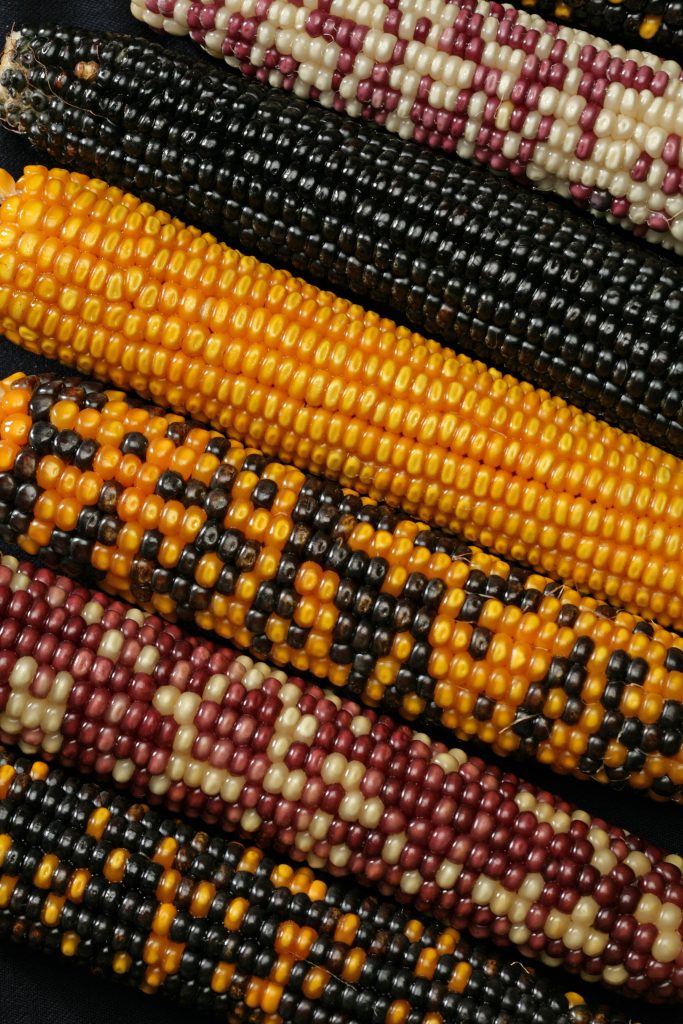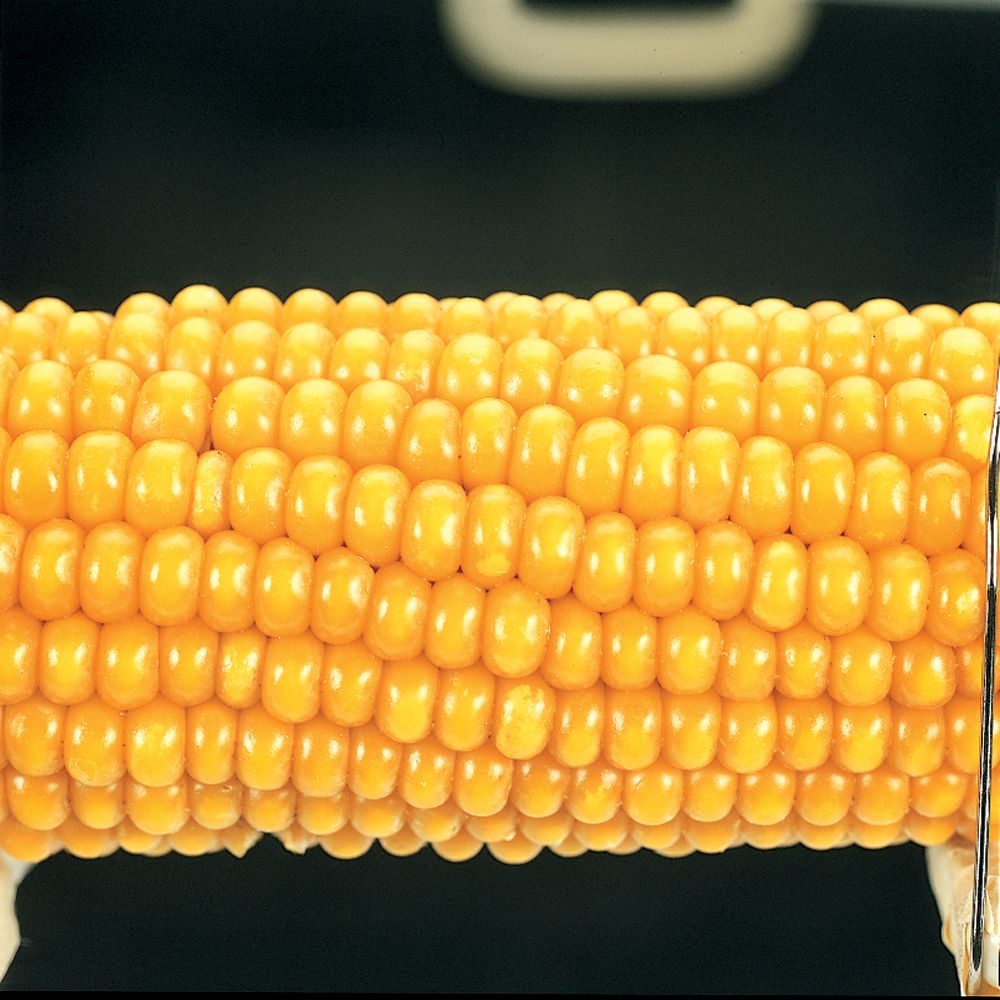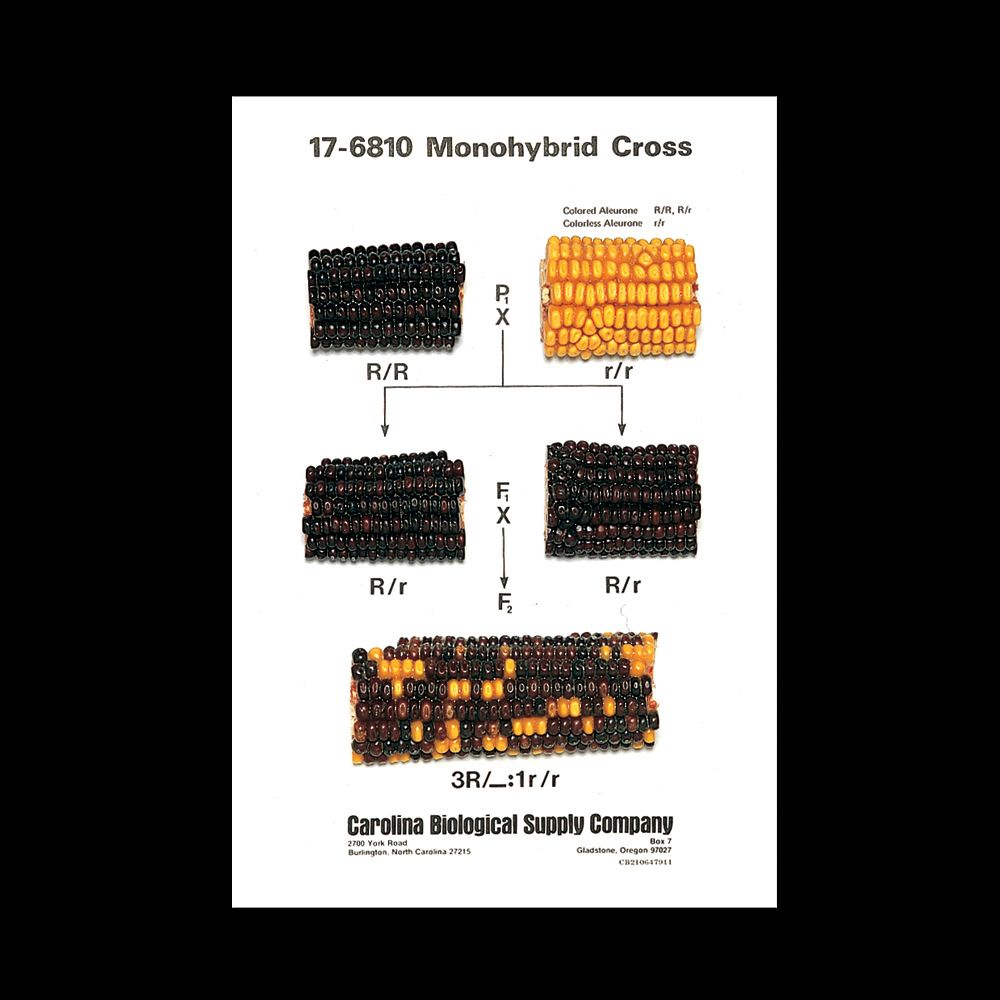Think about all the varieties of corn you’ve encountered—yellow corn, white corn, red corn, blue corn, and the thousands of products that contain corn. Have you thought about using corn to teach genetics? It’s the perfect, easy-to-use specimen. There’s no downtime waiting for plants to grow; offspring data are easy to obtain simply by counting kernels with specific traits; and the ears of corn are treated so they can be used many times.
Carolina has been producing genetic corn since 1967 and is the sole supplier of the product. What makes Carolina genetic corn special? Planting, harvesting, and preparing the corn is done by hand, ensuring every ear of corn yields Mendelian ratios so students can construct explanations for ratios and model genetic concepts. Here’s what we do to ensure you have the best possible product and your students have the best possible experience learning genetics concepts.
Our Corn Process
Corn is planted in plots that range in size from a few rows to 4 or 5 acres. The plots are at least 300 meters apart or separated by a natural barrier (wooded area) to prevent cross pollination between them (Fig. 1). Each year we plant between 20 and 30 of these plots. Corn in some plots is allowed to open-pollinate, while in other plots it is hand-pollinated.
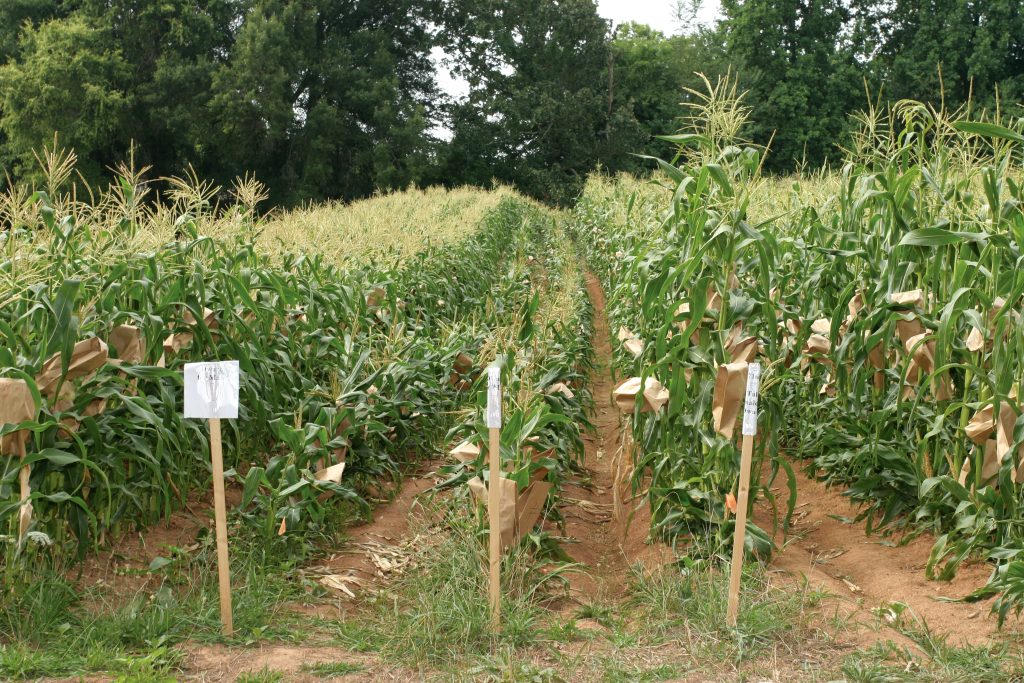
The life cycle of corn is simple and can be easily manipulated. Corn types are crossed by placing the pollen from one strain on the silks of another. While this procedure is simple, steps must be followed to insure that no foreign pollen lands on the the tops of immature ears, with silks that are just beginning to show or silks that would soon show are clipped (Fig. 2) to eliminate any unwanted early pollination. The clipped ear is immediately covered with a small bag called an ear bag. A mature tassel of the strain used as the pollinator is bagged with a tassel bag (Fig. 3).


The next day the tassel is shaken in the tassel bag and the pollen is transferred to the silks of the ear (Fig. 4). This is done by removing the ear bag and dusting the silks with the pollen from the tassel bag. The ear bag is replaced immediately after pollination.
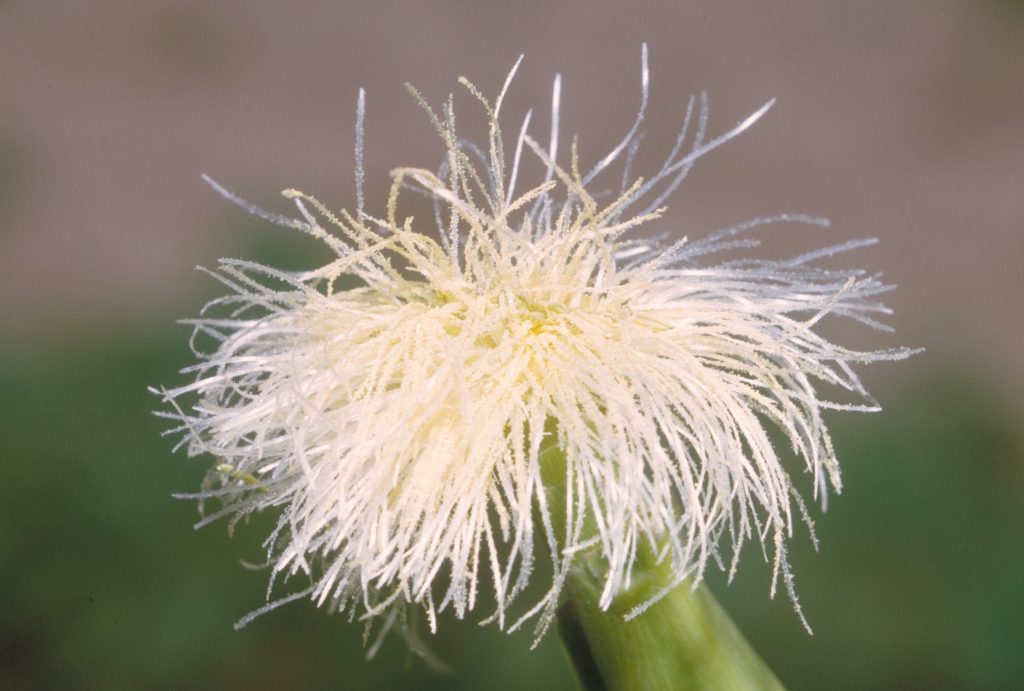
We give the corn constant attention as it grows, monitoring moisture needs and the presence of insects. Because mechanical harvesters can damage portions of the ears, all our genetic corn is harvested by hand (Fig. 5).
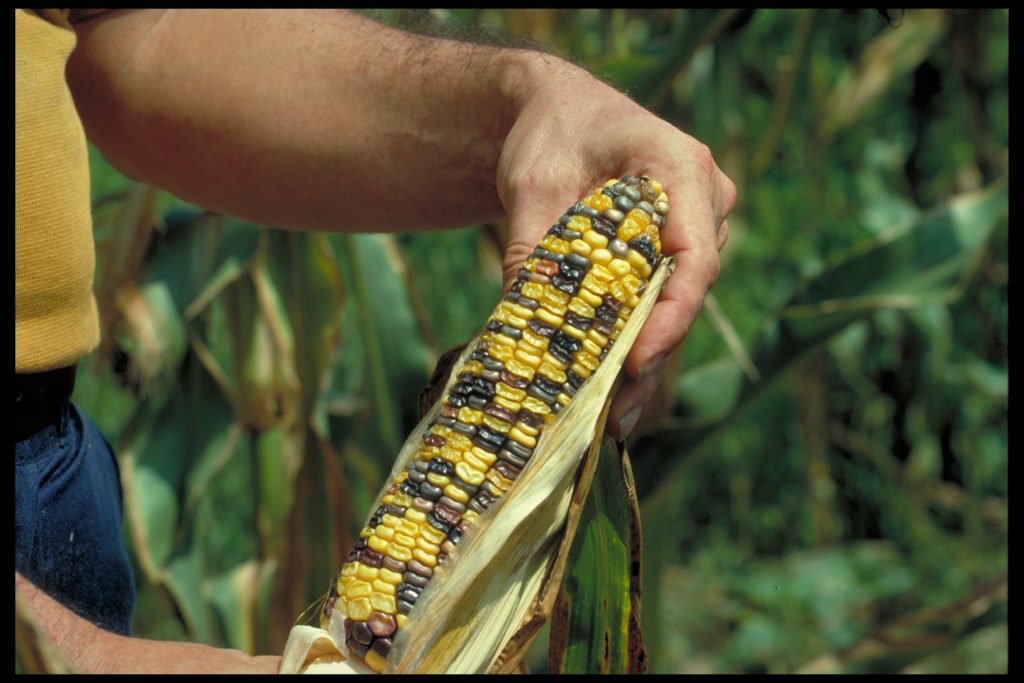
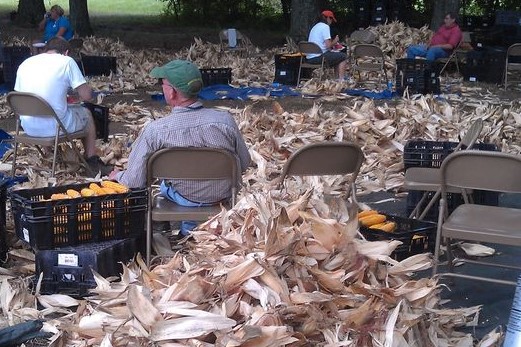
The corn is harvested before it is completely dry, graded, and then dried in protective crates. After drying, the segregated ears are lacquer-treated to improve the appearance and to hold the seed firmly to the cob. The ears are individually wrapped in clear plastic and labeled.
The genetic corn is now ready for you and your students to begin a real-world application genetics study. Watch the videos below for additional information on the process. They’re a good introduction to agricultural science as well as genetics.
Genetic Corn Seeds
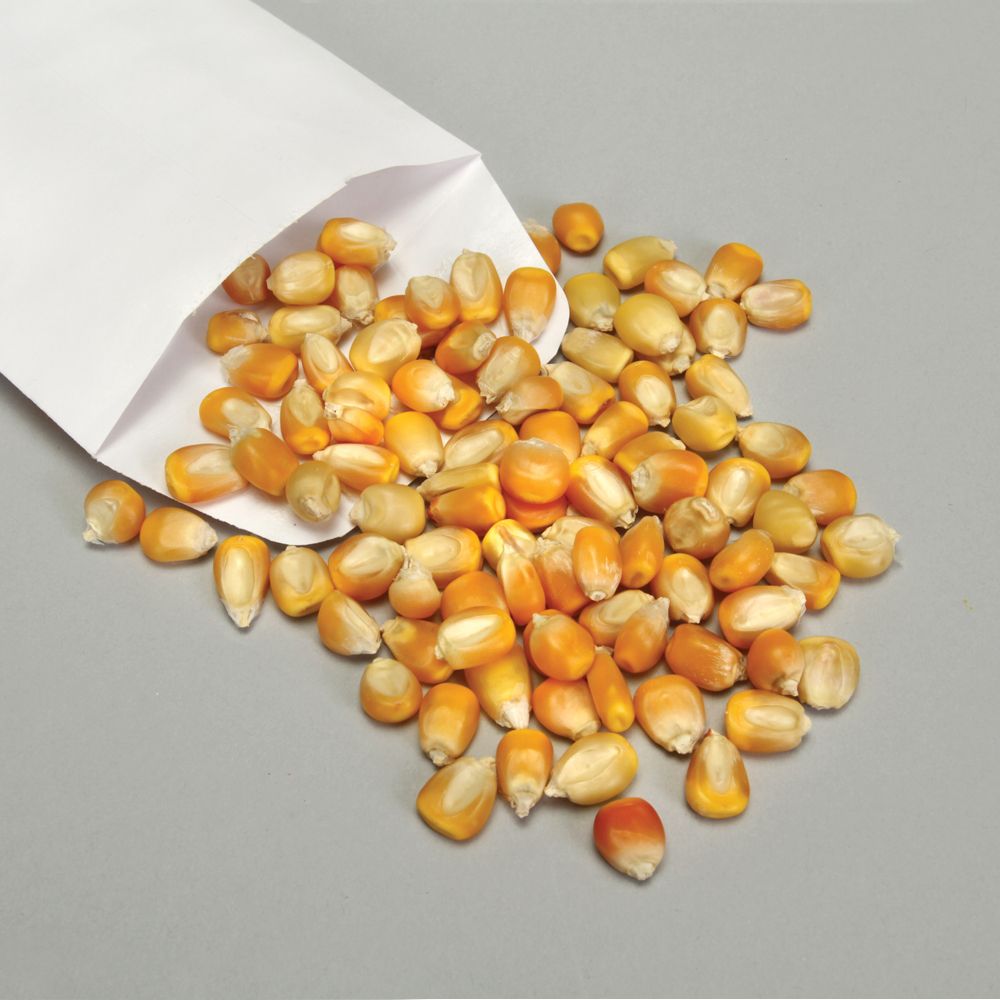
- Genetic Corn Seed, Dihybrid
- Genetic Corn Seed, Tall:Dwarf 3:1, Pack 100
- Genetic Corn Seed, Tall:Dwarf 1:1, Pack 100
- Corn, Sweet, Viable Seed, 1 lb
- Dwarf Genetic Corn Seed, Pack of 50
Genetic Corn Ears
Genetic Corn Kits
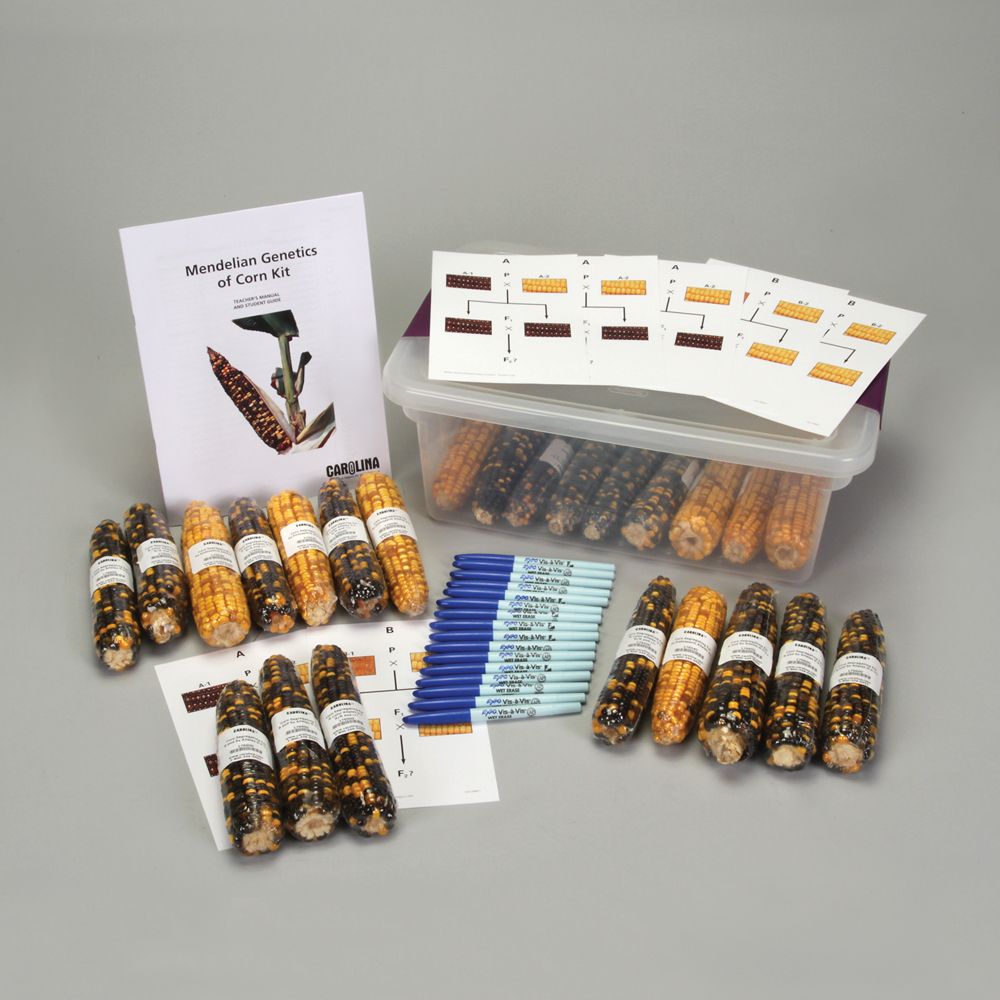
Mendelian Genetics of Corn Kit
This kit provides students the opportunity to examine Mendelian inheritance up close by scoring the inheritance patterns of traits on genetic corn ears and comparing results to those predicted by Punnett squares.

Monohybrid Genetics with Corn Kit
This is an introductory genetics activity for a beginning high school or middle school biology course. Students study the inheritance of grain color using ears of corn. Each grain is the F2 of a cross between a homozygous red corn and a homozygous white corn.

Carolina BioKits®: Corn Dihybrid Genetics
With this kit, students learn the basic principles of dihybrid inheritance and independent assortment using corn. Students first observe how traits of kernel color and nutrient composition pass from 1 generation to the next. Then they construct an hypothesis describing the mode of inheritance for each trait. This kit is designed for 30 students working cooperatively in pairs.
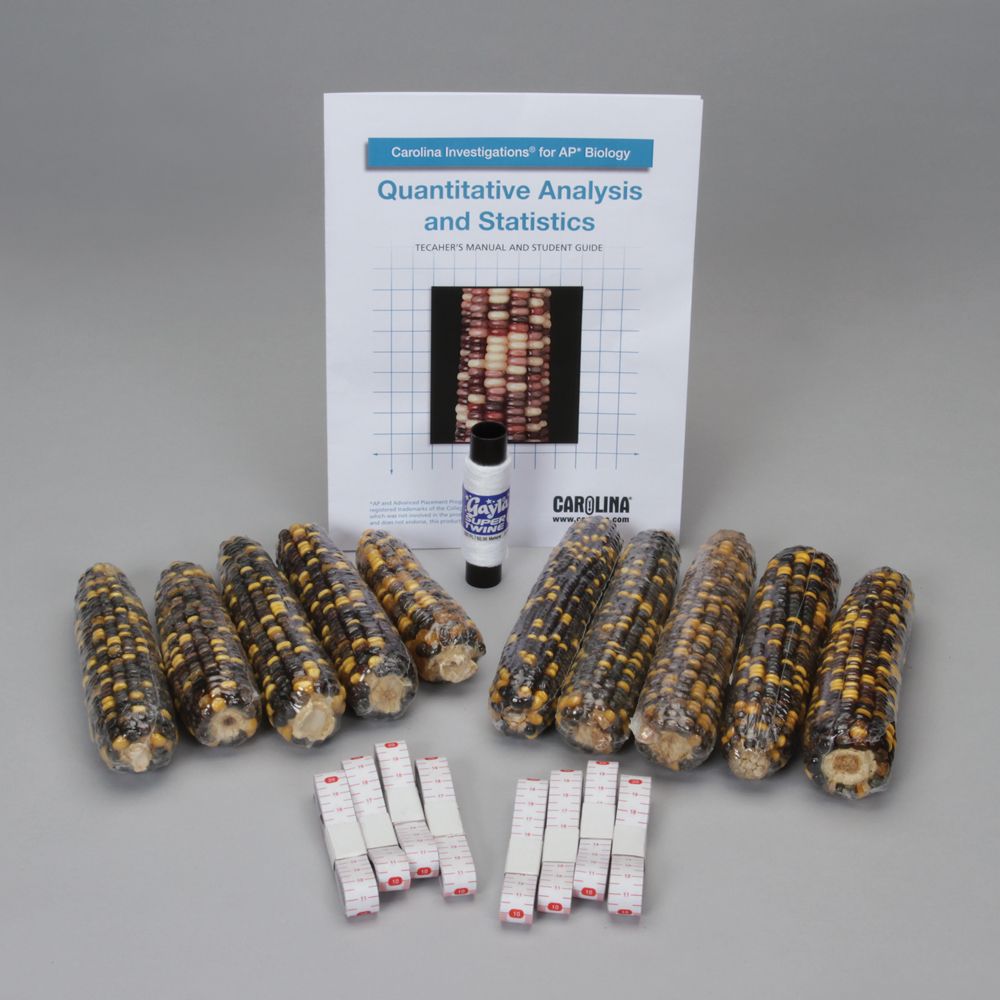
Carolina Investigations® for AP® Biology: Quantitative Analysis and Statistics
Addresses AP® Biology Big Idea 3 and Essential Knowledge 3.A.3 and 3.C.1. This advanced kit reinforces data analysis, visualization, and statistical evaluation skills. An optional pre-lab inquiry illustrates the value of statistics when applied to hypothesis testing. Students then complete any or all 3 guided-inquiry activities to reinforce their understanding of Mendelian genetics, chi-square test for fit, and other concepts.
Genetic Corn Mounts
Genetic Corn Resources
Try one of our genetic corn activities:
Corn as an Introduction to Mendelian Genetics
Introduce your students to Mendelian genetics with this activity that uses parental stocks of yellow and purple corn.
Learn about how genetic corn offers a convenient and affordable way to effectively teach Mendelian genetics.
Carolina Quick Tips®: Next Top Model (Organism)
Students seem to consistently struggle to understand Punnett squares and grasp Mendel’s laws.
Genetic Corn Reviews
About The Author
Carolina Staff
Carolina is teamed with teachers and continually provides valuable resources–articles, activities, and how-to videos–to help teachers in their classroom.

